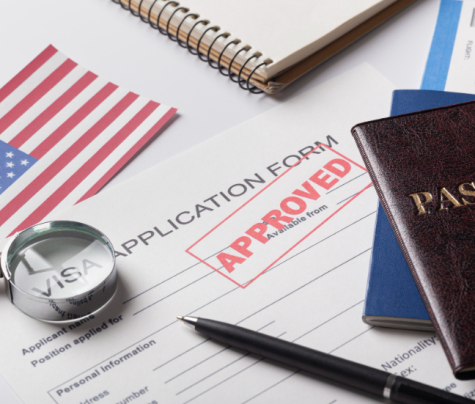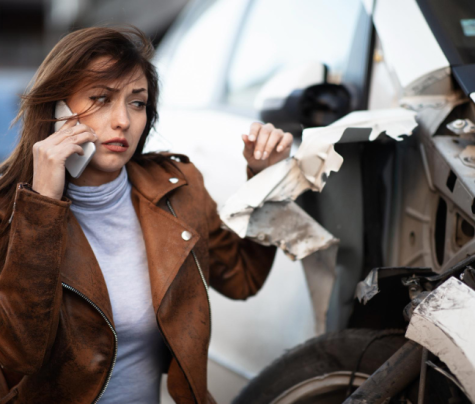
Multi-vehicle accidents present a labyrinth of legal and insurance complications that far exceed the complexity of typical two-car collisions.
With three or more vehicles in an accident, assigning blame, finding responsibility, and it becomes increasingly difficult to get just compensation.
The coordination of several insurance providers, inconsistent testimonies from drivers, and the possibility of shared liability create a perfect storm of claim disagreement and payment delay.
In such circumstances, there is a need to appreciate the intricacy of multi-vehicle accident claims and obtaining proper legal counsel to safeguard your rights and financial interests.
Understanding the Dynamics of Multi-Vehicle Accidents
Before I start talking about getting your compensation, it is important that you understand how a multi-vehicle accident happens. And why it can become tricky to claim your compensation.
Common Scenarios That Lead to Chain-Reaction Crashes
Multi-vehicle accidents typically originate from specific circumstances that allow for rapid escalation of a single collision into a complex chain of events:
- Rear-end collisions in heavy traffic often trigger domino-effect crashes when vehicles follow too closely. When one driver brakes suddenly, the vehicle behind may collide with it, propelling that vehicle into others ahead. During rush hour congestion, a single driver’s momentary distraction can initiate a cascade of collisions involving numerous vehicles.
- Poor weather or road conditions significantly increase the likelihood of multi-car pile-ups. Rain, snow, ice, and fog reduce visibility and traction, extending braking distances and compromising control. When roads become slick, vehicles may slide uncontrollably into others, creating chain-reaction scenarios that can involve dozens of vehicles in extreme cases.
- Highway pileups and intersection accidents represent particularly dangerous multi-vehicle scenarios. On highways, high speeds magnify impact forces and reaction times shrink dramatically. Complex intersections with multiple lanes and turning options create confusion when signals are misinterpreted or disregarded, potentially causing vehicles from different directions to collide simultaneously.
Why Fault Is Harder to Determine
A number of conflicting versions from drivers normally occur after multi-vehicle accidents.
Each of the parties sees the accident as per their own perception, without understanding the whole series of events.
This most likely ends up in conflicting versions of the incidences, which makes it hard to determine fault.
The domino effect and collateral collisions also blur liability. A driver may be nudged into another car by circumstance, but appear to be at fault for that collision to observers who witnessed nothing of the first collision.
Collateral collisions make complicated chains of liability that need to be analyzed closely in order to untangle.
Insurance carriers and adjusters have essential functions in determining fault but tend to be more suspicious and defensive in investigating multi-vehicle claims.
When several insurers are involved, each stands to save money by keeping their policyholder’s liability down and may thus contribute to an extended period of fighting and pointing fingers among carriers.
Determining Liability in Multi-Vehicle Accidents
Just like any other accident, proving fault and liability is important on a multi-vehicle accident. Here’s what you need to know!
The Role of Comparative and Contributory Negligence
Comparative negligence rules determine the compensation to be awarded if two or more parties are responsible for an accident. This rule of law understands that accidents occur as a result of many factors and does exactly that.
States have had mixed comparative negligence models that generally affect the available recovery options.
Pure comparative negligence states permit injured parties to recover damages if they are 99% at fault, but reduce compensation with percentage of fault.
Modified comparative negligence states have thresholds (50% or 51% usually) above which there is no recovery.
In the few remaining contributory negligence jurisdictions, any fault whatsoever (even 1%) will preclude all recovery.
Partial liability also influences compensation, sometimes bringing awards down drastically.
For instance, if your damages were $100,000 but you are 30% negligent in a state of comparative negligence, your largest recovery would then be capped at $70,000.
In cases involving multi-vehicles, percentage allocations become especially contentious.
Use of Evidence in Fault Determination
Police reports, dashcam footage, and witness statements form the foundation for liability assessment.
Police reports document officer observations and preliminary fault determinations, while dashcams may capture crucial moments that establish the sequence of collisions.
Third-party independent witness statements are handy because they may corroborate or refute driver testimony.
Accident reconstruction professionals use science to figure out how the accident happened. Professionals study skid marks, vehicle damage patterns, final resting points at the accident scene, and other tangible evidence to recreate the series of accidents.
Their professional opinion frequently becomes crucial in high-impact multiple-car accidents when it is not easy to know what happened next.
Vehicle damage inspection and medical reports are additional evidence employed in the accident scenario construction.
Injuries patterns are employed in establishing direction of impact and forces magnitudes, and vehicle damage analysis reveals collision sequences that are employed to establish which driver initiated the chain reaction.
When to Consider Legal Action
Before you leave,you need to check this out when seeking legal representation in multi-vehicle accident:
Filing a Lawsuit in Complex Accident Cases
Where negotiations for settlement fail to provide fair compensation, lawsuits are necessary. This is often the situation where insurers cannot agree on liability assignments or damages exceed policy coverage.
In multiple-vehicle collisions, the danger of stalemate increases with each additional party brought into the equation.
Pleading into or in defense of a multi-party action entails procedural niceties that differ from standard two-party actions.
Such actions may entail cross-claims, counter-claims, and impleader actions which bring in third parties into the action. The comprehension of these procedural tools (and their strategic elements) demands sophisticated legal skill.
Statute of limitations questions place critical deadlines for initiating lawsuits. They vary by state but typically one to four years for car accident cases.
Missing these deadlines permanently forfeits your right to seek recovery, and immediate consultation with an attorney is thus required after any car pileup accident.
The Advantage of Legal Representation
Attorneys’ role in managing liability claims includes constructing solid evidence-based arguments with respect to fault allocation.
An experienced car accident attorney is well aware of how to put your case in a favorable light in the context of relevant negligence and can effectively defend attempts at disproportionate blame allocation.
Additionally, one of the biggest benefits of having a lawyer is access to investigators and expert witnesses.
Quality law firms have lists of accident reconstruction experts, medical professionals, and other professional witnesses whose opinions matter that can lend great weight to your case during trial or settlement hearings.
Multipurpose settling with several insurers requires specialized expertise and experience. Experienced attorneys who handle multi-vehicle claims are familiar with common insurer techniques and can negotiate settlements among several carriers.
Such coordination usually yields superior aggregate results than negotiating a settlement with each carrier separately..
Final Guidance for Claimants
The impacts of a multi-car collision include special challenges that need to be addressed with precautions.
Knowing the intricacies that are involved in distributing liability, gaining thorough evidence, and managing strategic communications with the insurers are the pillars of successful claims negotiation.
Although filing claims individually is always a viable option, the complexity of multi-car accidents generally demands professional legal advice.
The distinction between right and maximum compensation usually depends on the efficacy of your reaction to the accident, documentation, and follow-up claim procedure.
By pursuing these multi-party claims with intent and proper legal advice, you increase your ability to receive proper compensation that fully covers your losses.
Keep in mind that in the complex case of multi-car accident claims, proactiveness and seeking expertise nearly always gets you more desirable.
Read Also:
- Types of Damages Available in Personal Injury Cases
- Why Trucking Companies Often Deny Liability in Accident Claims
- What Happens If Someone Else Is Driving My Car And Gets In An Accident?










0 Reply
No comments yet.